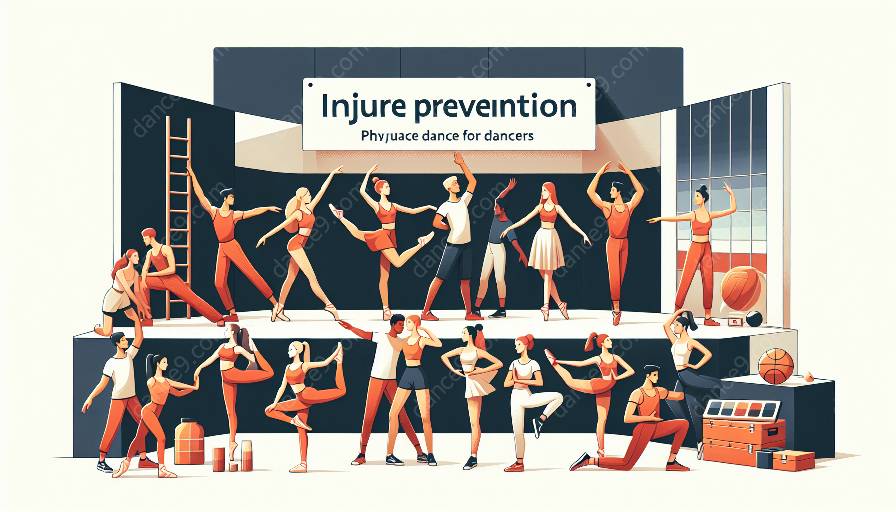Dance is a beautiful and expressive art form that requires physical strength, agility, and flexibility. However, dancers are prone to a variety of injuries due to the demanding nature of their craft. Understanding the signs, symptoms, and early intervention strategies for dance-related injuries is crucial for preventing and addressing these issues effectively.
Injury Prevention for Dancers
Prioritizing injury prevention is essential for dancers to maintain their physical and mental well-being while pursuing their passion. By implementing proper warm-up routines, incorporating strength and conditioning exercises, and improving technique and alignment, dancers can reduce their risk of injuries. Additionally, getting adequate rest and recovery, as well as seeking professional guidance from physiotherapists and sports medicine specialists, plays a pivotal role in injury prevention for dancers.
Physical and Mental Health in Dance
Physical and mental health are closely interlinked in dance. It is important for dancers to maintain a balanced and healthy lifestyle to support their physical and mental well-being. Proper nutrition, hydration, and adequate sleep are essential for optimal performance and injury prevention. Furthermore, addressing the mental aspects of dance, including stress management, anxiety, and performance pressure, is critical for maintaining overall health and well-being.
Dance-Related Injuries
Common dance-related injuries include sprains, strains, tendonitis, stress fractures, and overuse injuries. These injuries can manifest as pain, swelling, limited range of motion, and reduced performance abilities. It is important for dancers to recognize the signs and symptoms of these injuries early on to seek appropriate intervention and prevent further complications.
Signs and Symptoms of Dance-Related Injuries
- Pain: Dull, sharp, or persistent pain in the affected area during or after dancing.
- Swelling: Visible or palpable swelling around the injured area.
- Restricted Movement: Difficulty in moving or limited range of motion in specific joints or muscles.
- Weakened Performance: Decline in strength, coordination, or endurance during dance practices or performances.
Early Intervention Strategies
Early intervention is crucial in minimizing the impact of dance-related injuries. Dancers and instructors should be proactive in recognizing and addressing potential injuries to prevent them from progressing into more severe conditions. Simple strategies such as rest, ice, compression, and elevation (RICE), as well as seeking professional medical assessment and treatment, are essential for effective early intervention.
Furthermore, dancers should engage in cross-training activities to improve overall strength, flexibility, and balance, which can help prevent overuse injuries and enhance performance. Physiotherapy, rehabilitation exercises, and targeted injury prevention programs are also beneficial in addressing specific areas of weakness or vulnerability in dancers.
Conclusion
By understanding the signs, symptoms, and early intervention strategies for dance-related injuries, dancers can take proactive measures to prevent and address injuries effectively. Prioritizing injury prevention, maintaining physical and mental health, and seeking early intervention for injuries are vital components in promoting the well-being and longevity of dancers in the challenging and rewarding world of dance.


































